#American Playboy The Hugh Hefner Story
Text
Филми и сериали: Септеври част 1





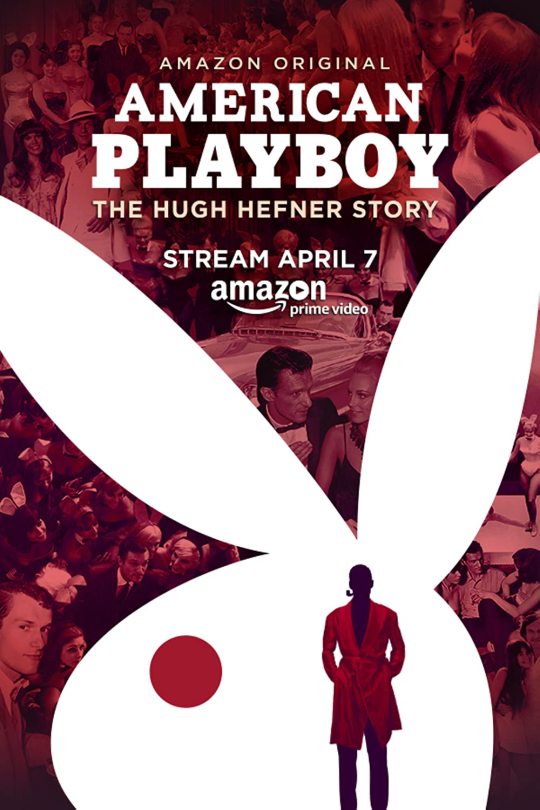








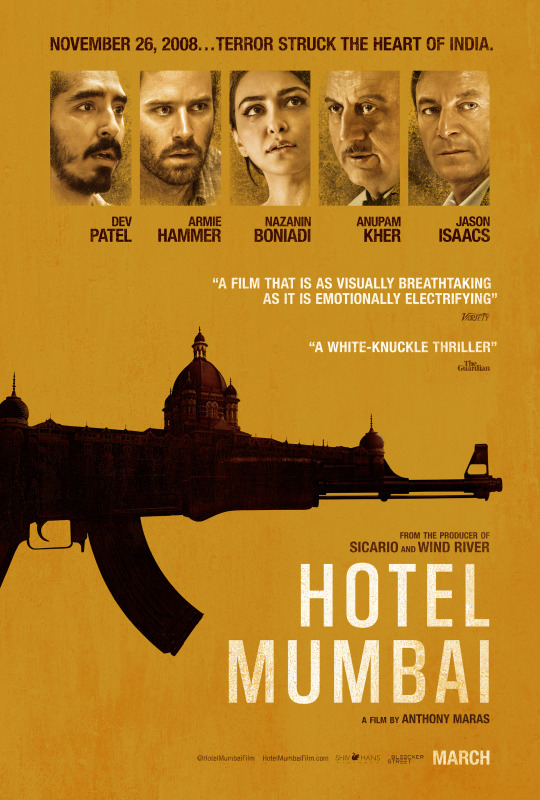





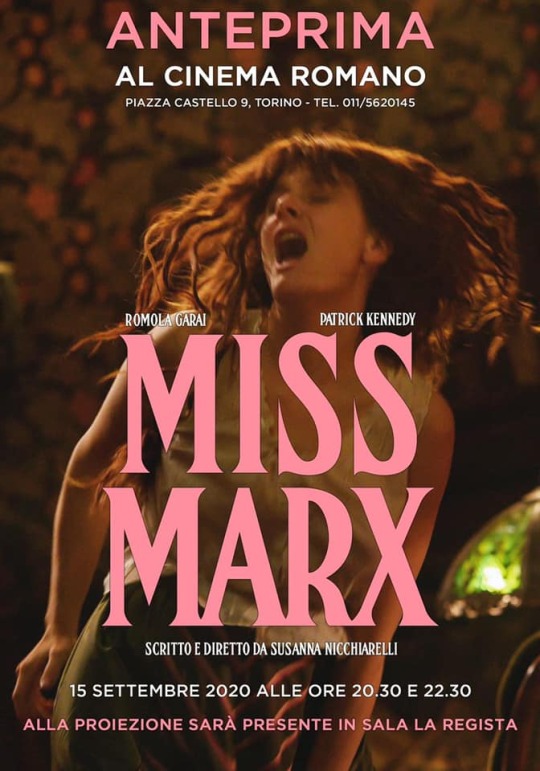


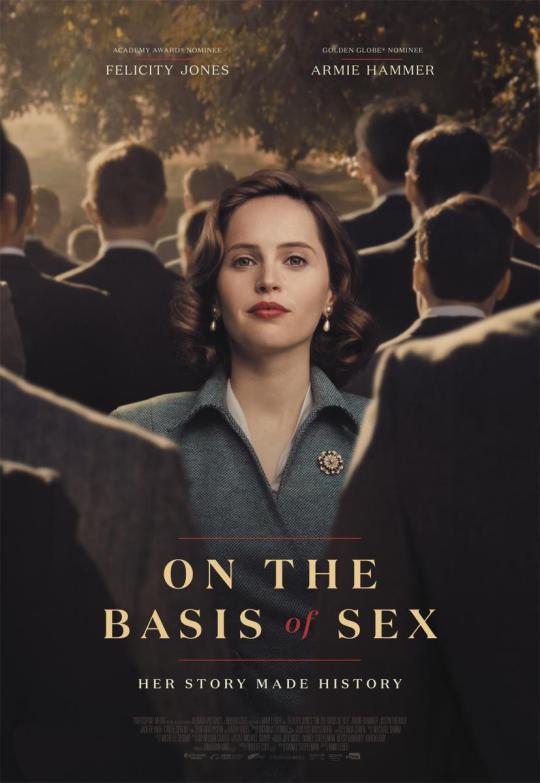
#филми#сериали#септимври#част 1#A Dangerous Method#Abzurdah#After Ever Happy#Agora#Amants#American Playboy The Hugh Hefner Story#Ayla The Daughter of War#Blonde#Ce que le jour doit à la nuit#Cigare au miel#Do Revenge#Everything I Am#For Ahkeem#Goodbye Christopher Robin#Hotel Mumbai#Inventing Anna#Like Minds#Lion#Marie Krøyer#Mica#Miss Marx#Moon Rock for Monday#No tengas miedo#On the Basis of Sex
2 notes
·
View notes
Text


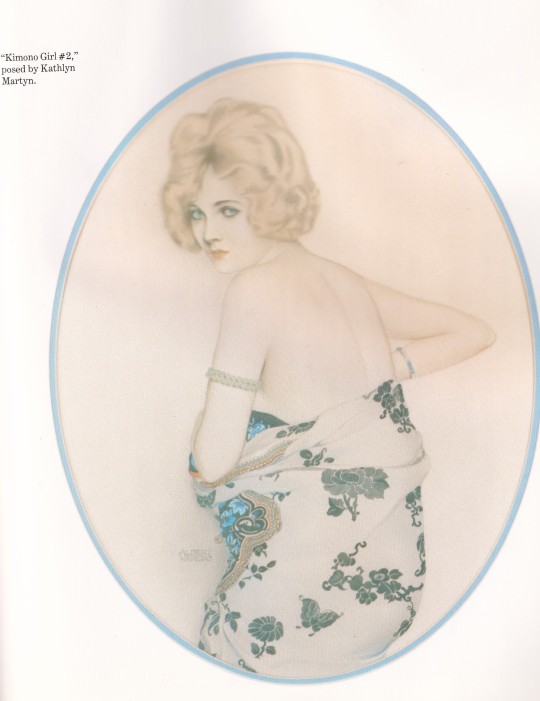


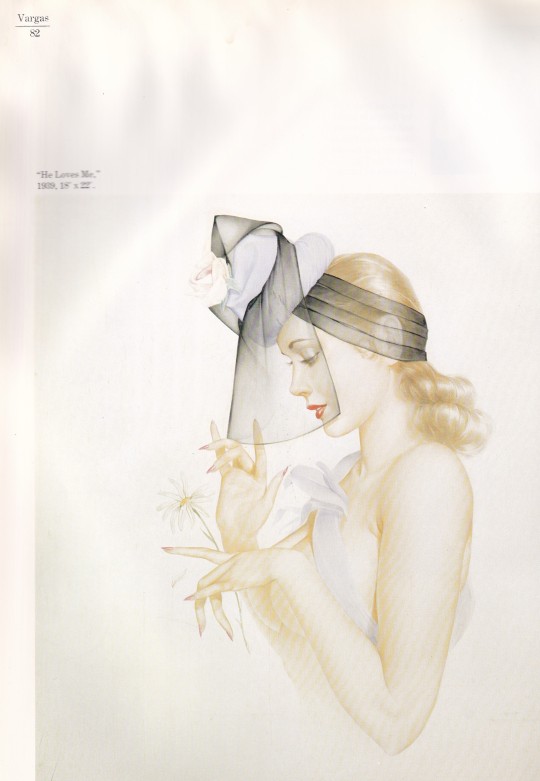
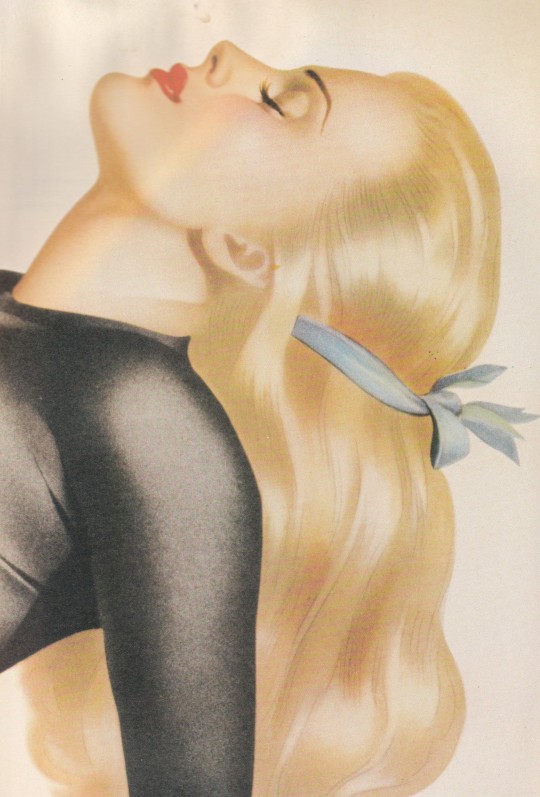

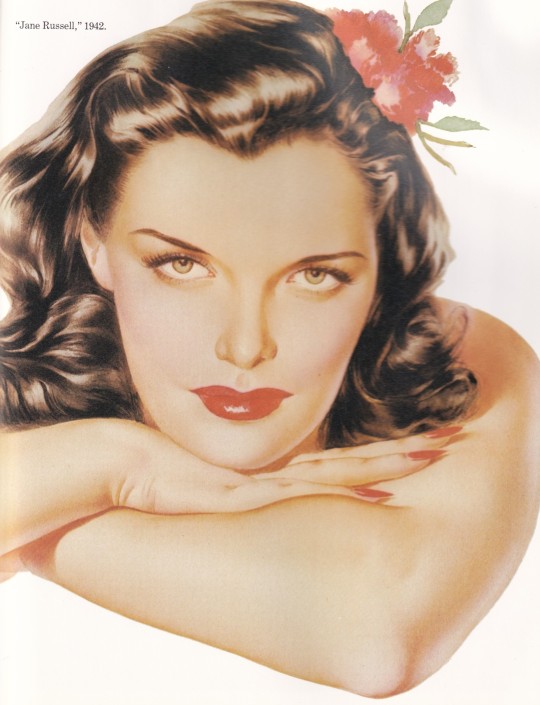
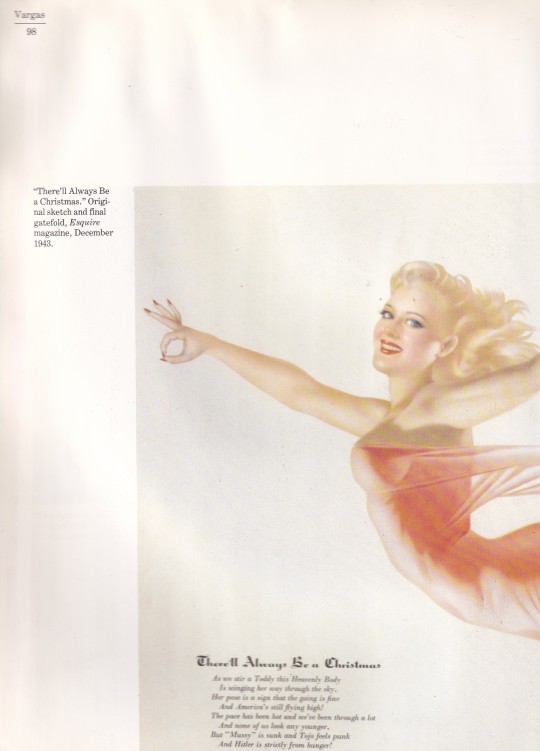
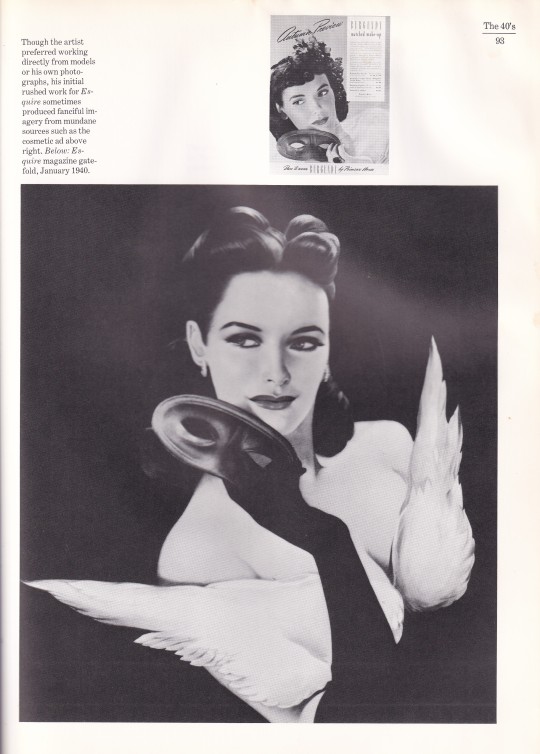
Vargas
Alberto Vargas and Reid Austin
Foreword by Hugh Hefner
Bell Publ., New York 1978, 128 pages, 23x31cm, ISBN 0-517-3365X Edges of boards are faded and slightly soiled.
euro 50,00
email if you want to buy [email protected]
Joaquin Alberto Vargas y Chávez (9 February 1896 – 30 December 1982) was a Peruvian-American painter of pin-up girls. He is often considered one of the most famous of the pin-up artists. Numerous Vargas paintings have sold and continue to sell for tens of thousands around the world.
For more than sixty years, Alberto Vargas has been celebrating the American woman in all her beauty and sensuousness. Now, accompanied by his remarkable life story, 160 of Vargas's most lushly alluring paintings have been gathered together in one exquisite volume. Voluptuous beauties from every period ahead: the Ziegfelde Follies girls, the glamorous Hollywood sex goddesses, and, of course, the inimitable Vargas Girls - those sensational creatures hwo have been gracing the pages of Esquire and Playboy magazines for nearly forty years. Vargas is a spectacular showcase of the art of the pin-up
20/12/23
#Vargas#Alberto Vargas#Ziegfield Follies girls#Vargas girls#Esquire#Playboy magazine#art of the pin-up#illustration books#fashionbooksmilano
100 notes
·
View notes
Text

LeRoy Neiman (American, 1921-2012)The Eye, Playboy, 1966. Oil on board. 32 x 24 inches (81.3 x 61.0 cm). Signed and dated lower left.
PROVENANCE:
The Norton Herrick & Curtis Hendrix Fine Art Group, Inc.;
Dyansen Gallery, California;
Private collection, California.
EXHIBITED:
London Playboy Club, London, 1966-85;
Chicago Playboy Club, Chicago, Illinois 1985-86.
When LeRoy Neiman and Hugh Hefner met in the early 1950's, it cultivated a relationship of over 50 years. Hefner was fascinated with Neiman's fashion illustrations for the Carson Pirie Scott department store chain and soon after hired Neiman to work for Playboy. Neiman's new technique experimenting with enamel paint was a stylistic hybrid of Abstract Expressionism and Impressionism.
Typically, these Playboy covers consisted of full-length women seductively posing for the voyeur. Of the 11 magazine covers painted, The Eye is the most unique as it allows the viewer to imagine who is the brunette woman that we only get a glimpse of. Hefner could have picked any other cover to represent the iconic magazine, but he selected The Eye cover to be part of the collection, leaving us to use our creative minds to construct the rest of the figure. His signature use of bold lines, vivid colors, and abstract brushwork along with the iconic "PLAYBOY" lettering makes this original painting recognizable and dynamic. Neiman's long and successful association with Playboy was the prelude for some of his most distinguished work. We are very excited to feature this work in our upcoming auction!
The idea that "the whole is greater than the sum of its parts" certainly can be applied to people. Think Rodgers and Hammerstein. Abbott and Costello. Mantle and Maris. Neiman and Hefner.
It is somewhere between unfair and absurd to suggest that LeRoy Neiman's rise to an artist beloved around the world is solely a result of his friendship with Hugh Hefner. But it would be equally inaccurate that they did not both benefit from their decades of friendship.
After he became friends with the longtime publisher of Playboy magazine, he landed something of a dream job when Hefner helped the magazine commission an illustration in 1954 for the fifth issue. As Neiman's friendship with Hefner grew, so too did is role with the iconic men's magazine. Before long, he was sent to major sporting events, concerts, or gala events at casinos, telling his stories through eye-grabbing paintings and drawings conjured in a brilliantly colorful expressionist style that became instantly identifiable with the artist who created it.
"LeRoy Neiman's Man at Leisure editorial in Playboy magazine illustrated the excess and irreverence of the 1960s," Heritage Auctions Vice President Todd Hignite said. "In this time of social revolution, Neiman captured glamorous snapshots of life with his brush. Nowhere is this more evident in his renditions of Playboy magazine covers as seen in The Eye. Unlike most of the Playboy covers, this deceptively modest and alluring cover captures the bold and flirtatious new world of the 1960s."
This lot is accompanied by a copy of the Playboy Magazine that is signed by the Artist on the cover and on page 114. This lot is also accompanied by a letter of authenticity from Dyansen Gallery, California, dated October 30, 1989.
https://tinyurl.com/3bafnmb6
17 notes
·
View notes
Text
On the inaugural night of the Chippendales club, the audience’s disbelief at the sight of a half-dozen men dancing and disrobing quickly melts into delight. The financially struggling owner, Somen (Steve) Banerjee (Kumail Nanjiani), has named his Los Angeles establishment for an eighteenth-century cabinetmaker whose rococo designs, Steve claims, adorned the residence of the viceroy of India. The venture may well be the earliest of its kind: a mainstream venue for striptease, by men, for women. The visual appeal of the amateur gyrators, who swan about on a sunken stage in the center of the room, to the Village People’s “Macho Man,” is questionable: they sport muscles and skimpy black underwear, but also mullets and long, greasy curls. Their looks may not matter much anyway; the hooting women are thrilled just to play the part of men for a night. But, for some, a real show needs more than role reversal. “Talk about a flaming pile of trash,” the choreographer Nick De Noia (Murray Bartlett) says at a later performance, when Steve asks him to leave. (Male patrons are not allowed.) In less than a decade, the two men, working in tandem, turn Steve’s frantic experiment into a national sensation, and lock themselves in a rivalry so radioactive it cannot but end in mutual destruction.
Opening in the late nineteen-seventies, Hulu’s “Welcome to Chippendales” is a night-club-lit comic tragedy that traces the spectacular rise and sordid fall of a cheesy yet pivotal corner of the sexual revolution. The series’ initial pleasures coalesce around the streamlining of the production numbers and the chiselling of its mall-sexy, Ken-doll-on-steroids camp aesthetic. Nick hires dancers who can move in unison—some, like Otis (Quentin Plair), boast professional stage experience. The troupe’s costumer, Denise (Juliette Lewis), smooths out the act’s kinks by supplying tearaway pants. Dorothy Stratten (Nicola Peltz), a Playmate turned rising actress, whose slimy, controlling husband, Paul Snider (Dan Stevens), talks his way into a small stake in Chippendales, is responsible for what becomes the brand’s signature flourish: the stand-alone cuffs and collars, inspired by the bunny uniforms at the Playboy Club. (When bean-counting Steve first meets Dorothy, he’s impressed—not by her title or her soft yet staggering beauty but by her acquaintance with Hugh Hefner.) As the business’s original mastermind, Steve goads a church group into protesting the club, then calls up a local TV station, garnering his “den of perversion and sin” some free publicity on the evening news.
Those who know Chippendales only from the “Saturday Night Live” sketch or as a popular Las Vegas revue may be surprised to learn of the organization’s violent history: in the early nineties, the real-life Banerjee pleaded guilty to racketeering, attempted arson, and murder for hire. It’s fitting, however, that the Hollywood version of this story focusses on a briefly magical collaboration that turns toxic over credit-hogging. The showrunners Jenni Konner (“Girls”) and Robert Siegel (“Pam & Tommy”) nurse ambitions of sociological insight in their reimagining of an Indian immigrant whose American Dream takes the form of a queer white man’s channelling of suburban-female desire. And yet the writers are also loath to relinquish the story’s twisty, true-crime roots. The result is an ideas-rich but disjointed series that feels like it’s tackling too much, yet somehow hardly enough, with a protagonist whose motivations are subject to whatever wild happenstance the scripts are setting up next. (Why does Steve idolize Hefner? And what does he think of his own improbable role in granting a greater degree of sexual agency to the kinds of women who might not consider men like him—brown, speaking accented English, financially unsteady in a disreputable industry—a viable sexual or romantic partner? “Chippendales” is strangely uninterested in the answers.) As the eight-episode season progresses, and the stripteases become sleeker, the show around them only gets messier.
No one enjoys the club’s runaway success for long. Nick, a Sondheim-loving snob with two Emmys that he won’t let anyone forget about, is tortured by the artistic challenge of having to top his own themed stagings. (An early favorite: shirtless bellhops thrusting against an ecstatic becardiganed hotel guest on a spinning fourposter bed—a genteel porn scenario that simultaneously emphasizes the woman’s allure and class status.) Although many hands went into building Chippendales, Nick knows, as does pretty much everyone else, that it is his genius that sustains it as an attraction. After a coke-fuelled bender, he and Denise decide that the most logical way to level up the stage show is by mounting “Hunkenstein,” a horror-tinged rock opera, to be performed by a live band, about the creation of the ultimate beefcake, assembled from the exceptional parts of various men. Steve’s angry rejection of the pitch poisons the well of his relationship with his choreographer. Every subsequent no from the boss further convinces Nick that he is “Mr. Chippendales,” a meaningless designation that he’s happy to trumpet on national television as he turns the production into a franchise and a tour, stoking Steve’s rancorous, scheming rage.
The divalicious Nick is the series’ only fully realized character, though Lewis and Annaleigh Ashford, who plays Steve’s charmingly practical wife, Irene, lend their scenes a lived-in sweetness that their narcissistic male counterparts resist. (Bucking the trend in recent strip-centric entertainment such as “Magic Mike,” “Hustlers,” “Zola,” and “P-Valley,” which reframe exotic dance as labor, sometimes under precarious or perilous conditions, the performers here, save one, are little more than a huddle of glistening torsos.) Compared with the supernova that is Nick, who is endowed with every last drop of Bartlett’s considerable charisma, Steve is a cold, gray moon. His arc is grander, though, transforming him, à la Walter White, from a striving underdog into a self-pitying sociopath. Nanjiani is serviceable as an actor from scene to scene, but he can’t find his character’s core, and receives little help from the writing. The racial microaggressions that Steve regularly endures are flat and obvious, almost P.S.A.-like. His biography is frustratingly spartan; the series only suggests, and barely makes coherent, why he moved to the U.S. and, before Chippendales, sacrificed half a decade of his life to an ascetic existence as a gas-station manager, subsisting on expired sandwiches, despite having enjoyed a comfortable life back in India. It’s only when Steve decides to wield America’s racial hierarchy against other minorities in pursuit of his own upward mobility—a dramatization of the middle ground between white and Black America that many Asian Americans occupy—that the series periodically achieves the political relevance it fumbles toward.
When Nick signs up Otis, the most talented of the auditioning dancers, Steve hesitates, noting, “He is Black.” Then he sees an opportunity in Otis’s race: “Customers will love it.” Both Steve and Nick turn a blind eye to the way their mostly white clientele single out the token dancer of color for particularly loutish objectification, grabbing Otis’s head for a kiss or reaching inside his briefs despite his clear discomfort. (“You don’t really get that at Lincoln Center,” Nick jokes.) Otis, who admires Steve’s achievements as a “brown-skinned brother . . . making shit happen for himself,” seeks racial solidarity with his employer, who sees his own hunger reflected back at him in a flattering light. But the entrepreneur, always sniffing around for a shortcut, realizes that the fastest way to climb up is by stepping on others. Steve’s misfortune is not that he’s wrong but, rather, that he lacks the wealth and the connections to discriminate at scale. America may be where Steve aspired to reinvent himself, but his adoptive home is relentless in making sure he knows his place. ♦
3 notes
·
View notes
Text
101
I never get the underground anymore and when I do tonight, after 2 years, I can't believe the intimacy of it. As I shyly attempt to shroud my LRB article from adjacent passengers both beside and above me, I watch a woman write to her boyfriend on WhatsApp - with full screen brightness - "you always do this". I watch a tanned man pick a font for his crypto newsletter, and a teenage tourist unbox and eat an entire tiramisu from the Selfridges food hall. People live like this all the time, I think, folding my own ear in half to block out a loud gum chewer I can't locate. Someone asks me where I got my bag and how much it cost. Two hundred and fifty five pounds, I’m forced to say to the entire carriage, who all eye what is essentially a glorified tote. It’s Japanese, I explain
I meet my mother at Colbert wishing I’d biked and we eat salads the size of basins. Enormous volumes of food make me feel safe in a way I can’t define, but being in America so often has also skewed my sense of what bounty looks like: American restaurants would call these “sides”. Lesbians keep hitting on me, mum says, I guess it's just my body type. My godmother is finally in therapy, I learn, after finding out her greatest love transitioned from male to female, and drinking to that point where even British people begin to think something’s wrong. I look out the restaurant window intermittently, squinting my eyes for signs of my former eating disorder treatment team clocking out in a nearby building. I ready one of the mini baguettes Colbert serve for free to pointedly eat if my ex-dietician (or future dietician, depending on how the next year goes) walks past. See I CAN eat carbs without you, bitch!
We are going to see David Sedaris read at Cadogan Hall, as we did together a few years ago. He’s old now, and I brace myself for the possibility of a rant about political correctness, a rant of the you-can’t-say-anything-anymore ilk that happens when people no longer recognise the world or run out of material. I didn’t have to worry. He got his teeth fixed during the pandemic and when he smiles or tells us about a boat someone named “cirrhosis of the river” I miss his gaps. A man to my right bites his nails and chews gum and I pull my hoodie tight around my skull. The public is complex, its sounds are disgusting. I understand Hugh Hefner’s storied refusal to leave the playboy mansion during his final years. I want so badly to force my life’s work on David Sedaris, have him see that we share a work ethic and a zodiac sign and North Carolina and tell me to my face it means nothing. I will then tell him a children’s magician from the 90s called and wants his shirt back
I wander around Tesco aimlessly near my apartment and an old cockney man with liver spots tells me he hopes I know the grapes are 2 for £3. I tell him I know but I live alone, I can’t eat that many grapes. “I live alone too but next week they’ll be £10 and you’ll be thanking me”. I dutifully take the second punnet of grapes because I respect my elders
0 notes
Text
Are the allos ok?
“One of the more obvious examples of compulsory sexuality is the fear of a sexless population. It is a great irony that despite hand-wringing over loose morals, Americans are having less sex than before. [...] As for American adults, in the 2010s, they had sex about nine fewer times per year than a quarter-century earlier. Such findings have prompted cover stories about “sex recessions” (a recession, naturally, is not a good thing), articles about how the sex recession could lead to an economic recession and hand-wringing comments over how young people are doing it wrong and are boring now. [...] Americans, according to some researchers, have traded the pleasures of genital stimulation for the pleasure of likes on social media and binge-watching The Great British Baking Show. In one Washington Post article about the decline of sex, an eighteen-year-old is described as sitting in front of “several screens simultaneously: a work project, a YouTube clip, a video game.” For him, abandoning this setup for a date or a one-night stand “seems like a waste.” [...] The loser of today has three computer screens and no sex drive. Such articles imply not only that sex is normal and wonderful but also that sex is the main source of adventure [...]. The existence of these associations can be traced back, in part, to the commodification of sex. Sex sells, and sex makes other things easier to sell. Hugh Hefner’s Playboy, often credited for this shift, did not merely provide photos of naked women. Playboy provided a vision of the good life, of what real men did with their time and money, and that included using their purchasing power to buy the attention of gorgeous models and access to orgies. When sex is a commodity, having and flaunting sex becomes a form of conspicuous consumption, used to signal that we are not passionless, uptight, boring, and robotic but instead have the financial and social capital to be hip and fun and high status and multiorgasmic.”
-
ACE by Angela Chen
#I know this is highly problematic but at the moment I just feel like laughing#allo problems#compulsory sexuality#asexuality#asexual
5 notes
·
View notes
Text
HEAR ME OUT: PARIS HILTON INSPIRED ME TO GO TO ART SCHOOL
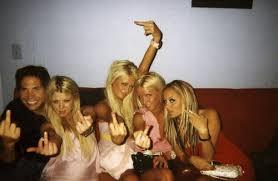
HEAR ME OUT: PARIS HILTON INSPIRED ME TO GO TO ART SCHOOL AND BECOME A FILMMAKER.
My sister and I played it cool until my parents dark purple grand caravan left the driveway. We knew we had to conceal our excitement of being home alone for a few hours in order to not seem suspicious. It was our chance to watch whatever trash was on television that day without the normal censorship our parents had set on us. My mother strived to win the gold medal for being a helicopter parent and my dad just agreed with whatever she said. Somehow we were always a step ahead of them. There was a vast lack of communication within my household which lead me to crave answers and sneak around to get them.
We really made a day of it. We pulled our big fluffy comforters off our beds and brought them to the couch, gathered every unhealthy snack from our cabinet (which was difficult as my mother kept a strict, low carb, low sodium, no sugar menu to chose from in our house) and hung heavy blankets over the windows to block out the glare on the 30 inch Panasonic VHS combo unit. My older sister, Cate, had control over the remote, she knew which channel number MTV played on and she memorized the Parental Control Password that was set on various channels that aired the exact rubbish it was to protect us from, but quickly became our favorite shows. At the time I didn’t even really know how Cate found out these shows existed. Our amount of media consumption was little to none. Living in a tiny town in Pennsylvania, attending private Christian school and hardly having a social life; our only connection to whats out there
would be the local blockbuster that my mother skirted us in and then quickly out of after renting wholesome family movies. I remember slipping away from my moms watch just long enough to find the “1 Night in Paris” sex tape DVD that was made in 2004 with Rick Salomon (who by the way has been married to Pamela Anderson TWICE!) and Paris Hilton as the star. A few years later, The Simple Life, featuring Paris Hilton and Nicole Richie became a huge success for Fox and was later taken over by E! network. The glimpse of the DVD cover was so scandalous I felt guilty just for looking at it. We were a few years late, really just catching the reruns of the show that E!, MTV or VH1 would play during the middle of the day, but we ate it up nonetheless.
The first episode I ever watched was on Season 5. The two girls become camp counselors and every week a different theme and set of campers come in to encounter their shenanigans. This episode was “Fat Camp” and the first order of business was for Paris and Nicole to give the campers enema’s before they start their week of dieting and exercise. It was absolutely ridiculous. I felt bad that these campers who fell victim to their bratty comments, yet my sister and I couldn’t take our eyes off it. Reality TV works in that way you know, where you feel bad, but not bad enough because its not your life.
Soon Cate and I started adding other reality shows to our pallet of rebellion. The Girls Next Door, a reality show about Hugh Hefner’s girlfriends living in the Playboy Mansion. Real World Cancun, AKA Jersey Shore before there was Jersey Shore. And of course The Hills where Lauren Conrad and Heidi Montag live it up in Orange County, a place I
thought was made up until I visited there in 2014. But the Simple Life remained my favorite of them all. But Paris Hilton was my first glimpse of glamour, so she always remained my favorite. Granted, Kim Kardashian has seemed to surpass her on many levels after starting out as her intern. And sure maybe Paris is an heiress who will never run out of money or resources and people behind her, producing her, but Miss Hilton found a savvy way to brand herself right at the pinnicale of the internet and she still had to work for it. As a filmmaker I am hyper aware of the way we consume media, which is why I’ve taken such an interest to Paris and this manipulation she had turned into an art form.
Before we go on, in case you don’t know how Paris got famous, I’m here to give you a brief backstory. Paris Hilton, heiress to the Hilton Hotels empire, was actually raised a lot like me. Her parents were strict. She wasn’t allowed to wear makeup or have much of a social life. I believe her parents knew what kind of name she bared and the harsh reality that could come with it, so they kept her on a tight leash. Despite their efforts to keep her tame she slipped away, out into the world long enough to meet famous photographer David LaChapelle, who became enamored with Paris and her sister Nicky, and insisting he take their photo. She knew it was highly against her parents rules to engage in that kind of activity but she went for it. He designed an elaborate set and costumes for them and they went ahead naively thinking the photos would be just for them to admire in private but were later were published in a 2001 Vanity Fair issue, getting her in a whole lot of trouble. She later had to turn down and offer to do Playboy because her parents would disinherit her. By the time she was 18 her career as a model
and professional partier could really take off. Paris became absolutely obsessed with fame. She came up with a formulated routine on how to grab the paparazzi’s attention. She would find all the places photographers would be hanging out that day and go to every single location just to be seen and her plan really seemed to work. She was the bright and shining star of every tabloid in America. She describes in the documentary film, “American Meme” how desperate she was, spending hours searching for a place with someone, anyone to take her picture no matter what it took. Her paparazzi access seemed responsible for Paris to become a household name. — add on?
We have to remember that this time, 2007-2009, was a turning point, as smart phones and blackberries were now in almost every American’s pocket and we were craving the tea more than ever. Tabloids started working around the clock to deliver us the latest scoop at the now possible all hours of the day; i.e. the tragedies of Amy Whinehouse, LiLo and her drug escapades, Britney Spears and her hairless melt down, the list goes on. We asked for it, we got it and kept asking for more. After Paris sought out these outlets, the offers poured in. Her own show, movie roles, modeling for brand name designers, she became a DJ, became an author, a business woman, a fashion designer she owns hotels in Dubai and is currently carrying a hefty 10.5 million instagram follower count.
I know what you’re thinking, like okay so who cares about this rich “bimbo” (dubbed courtesy of a New York Post article circa 2007) but just hear me out. Most of us can relate to her story and if not, at least to some of her tactics. What I grew to realize after becoming social media obsessed (possibly because I was deprived as a child) is that
no matter how information changes or what new technology comes to pass it along to us, we will always be doing it in the same way. I watched Myspace come and pass, seeing thousands of singers, bands and actresses get discovered through that site, even some playmates in Playboy magazine. I saw Facebook allow us to put every single thing about our lives on blast at any minute of the day. Twitter allows us to barf our thoughts up in once 180, now 280 characters, Vine stars made 6 seconds videos and now make 6 figures from their fame and last but not least Instagram, and trust me when I say I cringe having to say this, “influencers” sell to us with every photo or video they post. Whether that be a lifestyle, a product or just themselves as a person. A vast majority of us have to admit that we are drinking the juice. We ourselves are partaking in marketing our “best life” being lived via Instagram. So ask yourself, what is the difference between what we are doing on the Gram versus what Paris was doing in 2006, showcasing her persona to the media in the only way it was accessible at the time? Why not manipulate it the same way it manipulates us? Find out where the quote on quote Paparazzi are and market yourself the same way reality stars did.
Not that I have the intention to come up in the same way some of these heiresses who’s names are already famous or these vine stars or twitter comedians did but I have the power to show a portion of the world who I am and what I can do to earn my career as a filmmaker and communicator via social media.
I realized that what I was doing as a little kid, waiting for my parents to leave to seek a world outside my own is exactly what Paris did. She took the risk and got the answers.
Her obsession with fame coincided with my obsession with social media, to communicate and or get my work out there. I’m just trying to work system to brand myself. My research shows that the reality show we down load from an app store and place in our pockets has led me to some big wins. Upon getting hired for shoots or my work recognized in some way, I see there is a formula to the entire thing. When to post, how to post, who to follow, etc. I have no producers behind me to curate my Instagram, I have no connection to someone with a big name. All I have is myself to show for what I can do and if I keep going back to the place with the most access to the loudest voices , like Paris did I may have a shot at getting my own voice out there and I will say more important things than “thats hot” I promise you.
In the end I think that the reason I clung to Paris and her story so deeply was because it was virtually first and foremost example I had and to as impressionable young woman, that kind of thing sticks. The definition of success and how to obtain it was taught to me was by sneaking her show on a Saturday afternoon while my parents when to Shop Rite without me. I’ve just stayed observing all the ways fame has developed via internet and can lead to success. But the beauty of the defying gravity factor is that this blond “bimbo” and many other “bimbos” like her have done the same thing, most without the Hilton name. All I did was think twice before I believed that reality television was just a trashy phase. Instead I realized that I, like many others, am still consuming similar content in 2009 now in 2019, the difference is its in the palm of my hand and I’m deciding to take advantage of it.
#y2k#paris hilton#nicole richie#new york post#early 2000s#early 2000s fashion#90s fashion#90s nostalgia#90s kid#90s#the simple life#kim kardashian#kylie jenner#art school#pratt#pratt institute#blog post#art blog#journalism#cultural commentary#social commentary#new york#brooklyn#la#los angeles#nyc#photography#disposable camera
8 notes
·
View notes
Photo


In her early years while dealing with a mother who had chronic depression and an unstable father put a toll on young Gloria and cause her to find an escape in dancing before moving in with her sister in her last year of high school. Steinem received education from Smith College in Northampton, Massachusetts, and during her junior of college spent time in England, where she then got pregnant. Being recently single, still in school, and about to go to India for two years from a scholarship she had received, Gloria decided to get an abortion. However, it was still illegal in England and the United States. Starting her career in the 1960s as a freelance journalist working for whomever she could get an assignment from. Yet, at this time, it was difficult for women to enter the workforce and earn writing assignments that were going to make as much as a man would.
Steinem’s first big break was in 1963 when she wrote an exposé article for Show magazine on the Hugh Hefner Playboy Clubs.
Entitled "I Was a Playboy Bunny." This expose described her experience in going undercover to work as a waitress in Hugh Hefner's Playboy Club. This eye-opening article brought to light many of the sexist practices in use at the men's club. Steinem was slowly gaining a reputation for taking on controversial topics related to gender issues and the status of women in society(Stevenson).
After this article, she struggled to be taken seriously until 1968, “she helped found New York magazine, where she became an editor and political writer.”(Michals). While at New York magazine, she got to report on political campaigns, national conventions for both democrat and republican, social issues, and in ‘69 pushed for legalization of abortion at a speak-out for the cause and shared her own story of abortion at that event. This began her push into politics, and “In 1971, she helped to create the National Women's Political Caucus with the help of Betty Friedan, Bella Abzug, and Shirley Chisholm. This organization, still active today, works to bring more women into the political process, through education and the support of female candidates for office”(Stevenson).
In 1971, Steinem also opened Ms. magazine “It debuted in 1971 as an insert in New York magazine. In 1972, Ms. became an independent, regular circulation magazine. Steinem remained an editor and writer for the magazine for the next fifteen years and continues in an emeritus capacity to the present”(Michals). The magazine covered subjects from reproductive freedom, job discrimination, and even had a “shocking” ad about the legalization of abortion.
Steinem also helped to establish the Ms. Foundation in 1972. This non-profit organization assists women's self-help organizing efforts and raises money to support underprivileged girls and women to achieve their goals. On April 28, 1993, the foundation initiated the first "Take Our Daughters to Work Day." The goal of this national day is to expose girls to a wide variety of professions to increase their chances of having diverse and meaningful careers when they get older (Stevenson).
Gloria Steinem spent most of her career in the 70s fighting for equal rights for all by supporting and pushing for the Equal Rights Amendment (ERA) to pass and fighting for Roe v. Wade to legalize abortion. “President Jimmy Carter appointed her as a commissioner to the national committee on the Observance of International Women's Year in 1977. She also helped to found several organizations such as Voters for Choice, the Coalition of Labor Union Women, and Women Against Pornography” (Stevenson). Gloria Steinem is still active in feminist politics today; while she is more private about her life, she has made a dent in American politics and society. By helping women across America no longer feel alone in their state of living in a male-dominated world. She inspired women to begin to talk and to start to expect to be heard when speaking. "Feminism has never been about getting a job for one woman. It's about making life more fair for women everywhere. It's not about a piece of the existing pie; there are too many of us for that. It's about baking a new pie"- Gloria Steinem 2008.
Works Cited
Michals, Debra. “Gloria Steinem.” National Women’s History Museum, 2017. 12/1/2020.
Stevenson, Keira. “Great Neck Publishing.” Literary Reference Center, 2005, web.a.ebscohost.com.proxy.lib.wayne.edu/lrc/detail/detail?vid=3&sid=a3b2638b-cc9c-4f4e-bb40-562c419d1c43%40sessionmgr4006&bdata=JnNpdGU9bHJjLWxpdmU%3d#AN=18013558&db=lfh.
2 notes
·
View notes
Text
American Playboy - The Hugh Hefner Story: Season 1/ Episode 1 "Before the Bunny: Marilyn Monroe" [Series Premiere] - Overview/ Review (with Spoilers)
#AmericanPlayboy - The #HughHefner Story: Season 1/ Episode 1 "Before the Bunny: Marilyn Monroe" [Series Premiere] - Overview/ Review (with Spoilers)
With a strong focus in using archival video when possible, and using actors to fill in the blanks, American Playboy – The Hugh Hefner Story, finds a rather interesting way to liven up the documentary genre. (more…)
View On WordPress
#Amazon#American Playboy - The Hugh Hefner Story: Season 1#Before the Bunny: Marilyn Monroe#Episode 1#Matt Whelan#Series Premiere
0 notes
Quote
The world of Playboy was a profoundly sad one. In photos, Hefner never looks particularly happy, and he was a recluse who didn’t even seem to enjoy the copious amounts of sex he had. (“There was zero intimacy involved… No kissing, nothing.”) Hefner’s fantasy lifestyle was inhuman in every way. It was sex as something mechanical and lifeless, something one did because it was the thing that made you a Playboy, rather than because of true passion. That’s the dark secret about Hefner: he wasn’t even a hedonist. A hedonist pursues pleasure. Hefner didn’t even care about pleasure. He cared about the taming and conquest of women.
There’s an important critique of libertarian morality to the Hefner story, too. Hefner was an advocate for freedom from all kinds of government restraint, a champion of the First Amendment and abortion rights (as every obituary has reminded us repeatedly). He was a “passionate libertarian.” Hefner also believed he was changing American morality, saying: “What it really comes down to is an attempt to establish what has been called a new morality… really think that’s what this thing called the ‘American sexual revolution’ is really all about.” (This is taken from the NYT’s charming compilation of Hefner’s “Most Memorable Interview Moments.”) Here we see exactly what happens when “freedom” is taken to be a moral philosophy in itself. Like many libertarians, Hefner wanted to be free, but he wanted to be free from government tyranny only so he could exercise a kind of unaccountable private tyranny. As with libertarianism always, “freedom to be a dick” seems to be the goal. He wanted to establish a “new morality” that would simply let him do as he pleased to women, without any ethical constraints. “Liberty,” while essential, is meaningless unless it is also coupled with a set of standards for how people should actually behave toward one another.
I am not actually celebrating Hugh Hefner’s death. It’s sad when people die. By “good riddance,” I don’t mean that I take personal pleasure in his death, but that the world will be better once it rids itself of Hefner’s values. And since Hefner himself was an evangelist for those values until his last days, we are better off without him. (I felt the same way when Antonin Scalia died. I didn’t want him to die; I would have preferred that he had remained alive and simply renounced his horrible beliefs and become a good person. But he never did, so we had to settle for death.)
Current Affairs | Culture & Politics
12 notes
·
View notes
Photo
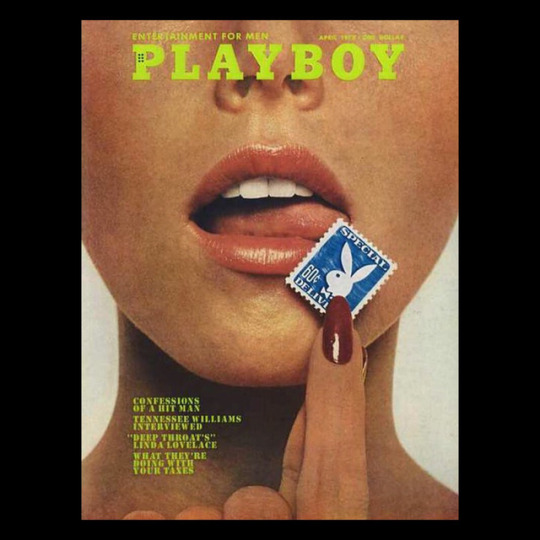
"If you don't encourage healthy sexual expression in public, you get unhealthy sexual expression in private. If you attempt to suppress sex in books, magazines, movies and even every day conversation, you aren't helping to make sex more private, just more hidden. You're keeping sex in the dark, what we've tried to do is turn on the lights." ✨ - Hugh Hefner . . . this man made it more possible for women to express their sexuality without feeling ashamed or embarrassed. sex is a beautiful and natural thing, no one should be afraid of who they are and how to express themselves. . . . RIP to the original Playboy, 💔 (if you haven't watched the documentary "American Playboy - The Hugh Hefner Story" then I highly suggest you do)
3 notes
·
View notes